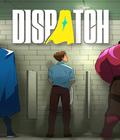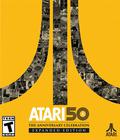
Genre: Fighting
Publisher: SNK Playmore
Developer: SNK Playmore/Terminal Reality
Release Date: October 28, 2008
 As one of the more popular fighting game series in existence, The King of Fighters is an important franchise for both the Neo Geo console and arcade fighters. A game that is partially a mash-up between SNK's big fighting games at the time, The King of Fighters introduced the concept of teams to fighting games and matches that could last more than three rounds. When the series progressed, that concept opened up to larger rosters, special moves via teammates, team customization, and a fighting game series that acted more like a sports game thanks to yearly updates. To celebrate over a decade of existence, SNK Playmore brings out The King of Fighters Collection: The Orochi Saga, a collection of the first five games in the series. On paper, this sounds perfect. In reality, however, this compilation isn't what fighting fans have been awaiting.
As one of the more popular fighting game series in existence, The King of Fighters is an important franchise for both the Neo Geo console and arcade fighters. A game that is partially a mash-up between SNK's big fighting games at the time, The King of Fighters introduced the concept of teams to fighting games and matches that could last more than three rounds. When the series progressed, that concept opened up to larger rosters, special moves via teammates, team customization, and a fighting game series that acted more like a sports game thanks to yearly updates. To celebrate over a decade of existence, SNK Playmore brings out The King of Fighters Collection: The Orochi Saga, a collection of the first five games in the series. On paper, this sounds perfect. In reality, however, this compilation isn't what fighting fans have been awaiting.
The first game in the compilation, The King of Fighters '94, introduces players to the basic concepts that will govern the entire game series. Players select a pre-made team of three fighters, some new and some from previous SNK fighters such as Fatal Fury and Art of Fighting, and fight against several other teams until they reach the end of the game. During each match, once a fighter is defeated, he is out of the game until the next match begins. The victor of each round gains a little energy before facing off against the next team member. The King of Fighters '95 gave users the option of selecting pre-made teams or customizing the team with three fighters of their choosing. The King of Fighters '96 did away with pre-made teams, forcing players to create a team of fighters using any three fighters of their choosing. The King of Fighters '97 gives players the choice between using the super attack system of The King of Fighters '95 or The King of Fighters '96. Finally, The King of Fighters '98 provides the game with the largest roster of the collection while adding all of the previous changes made by the series' earlier games.
The Orochi Saga provides both arcade versions of the games listed above and practice versions where players can try out their moves with their characters and teams. As is customary in any classic game compilation nowadays, The Orochi Saga features an Extras page that stores a music player for the complete soundtracks to all of the featured games and an artwork viewer to view character illustrations and other artwork from the game staff. Unlocking said items requires completing certain challenges, which are now directly accessible through the Challenges menu instead of through the required games.
Despite being more than 10 years old, the games in this collection are still as fun as they were years ago. The team-based system of play adds some depth, as you always have to figure out which of your guys you want sacrificed first in a fight. This is especially true in The King of Fighters '94 since there was no team edit in that game, forcing you to learn all of those team members well or get rid of your worst guys early in order to get better fighters later.
It's also a great game to play against friends since the fighting system is as deep as the other big name fighting games out there, making it a good choice for veterans and novices of the series. Unfortunately, the game still retains the SNK level of difficulty, meaning that some fights are cheap and boss fights are controller-breaking affairs because of the cheap tactics that they use. Still, if you're already used to the SNK difficulty levels or just intent to play with friends, this is as good as it was back then.
One really noticeable flaw in the game has to do with load times. Loading between the main game menu and the game is actually fair, so load times here aren't too long and are par for the course on the aged system. However, from The King of Fighters '95 onward, load screens are displayed between each fight. The times get worse as you go to the later games in the compilation. This is perplexing, since some of the other King of Fighters games on the system — such as KoF 2002, KoF 2003 and KoF 12 — don't contain such load screens at all. If the newer games can be done without load screens between fights, it's confusing as to why the older games suddenly sport load screens.
The controls are good but suffer from the default button arrangement. The basic control scheme calls for movement with the d-pad, light punches and kicks, and heavy punches and kicks. Analog stick movement replicates the d-pad, making it easier to pull off some characters' special moves. This is completely fine. However, unlike other fighting titles, the game places the punches on the bottom buttons (X and Circle) while the kicks are placed on the top buttons (Square and Triangle). Other fighting games, including The King of Fighters 12 and The King of Fighters 2002/2003, place punches at the top and kicks at the bottom. This default placement can be fixed in the options, but it still remains a silly proposition to change something that most console fighting fans are already accustomed to.
At the time the games had appeared, people thought that they had seen the peak of how far designers could take the graphics of the Neo Geo console. It was amazing back then to see such an old console produce some of the best sprite-based graphics seen anywhere; that statement still holds true today with all five games in the compilation.
Although the graphical style doesn't change much between games, the title still looks arcade-perfect. There are some good character details in the fighters and the animations, while not silky smooth, are still very nice on some of the fighters appearing in the later games. The backgrounds, however, are what will really wow people. Just about every background features some animating parts, whether it be large crowds of spectators or vehicles moving in the background. Reflections were also used in the water of some backgrounds, an effect that wasn't used much back then. The King of Fighters '97 gets some special mention as well for introducing time changes in the background as the fight moves from round to round.
The sound package is a good one, though it should be noted that there are some bad bugs in the later titles. The music and sound effects sound as clear as they originally did over 10 years ago. While the soundtrack may not be as memorable as some tracks from other fighting games, it sounds appropriate and makes you want to fight. The effects have more bass to them than other fighting games, making hits sound deeper and giving projectile attacks a deeper roar to them when they are executed. The voices are exactly the same as those heard in the arcades, meaning the announcers sound fine and character taunts either feature perfect Japanese or decent English. All of these things work fine for the first thee games in the package, but the final two suffer from some pretty interesting bugs. In The King of Fighters '97, there have been times where the music volume drops significantly, leaving you with nothing but sound effects and voices. This isn't as bad as the bug experienced by The King of Fighters '98, however, where the announcer would give out the wrong audio calls during a match. It's both laughable and pitiful to hear the game call you a winner right before the match even begins.
At the end of the day, The King of Fighters Collection: The Orochi Saga for the PS2 ends up appealing only to those gamers who have no other way of playing the five games included in this compilation. A quirky default control scheme, numerous load screens, and some audio bugs will annoy those looking for arcade-perfect conversions of these games on their PS2s. If you're strong enough to look past the issues mentioned earlier, then this isn't that bad of a purchase. If you know that these things will bother you to no end, your best bet would be to either find another console that plays these games (such as a Neo Geo or a Japanese Saturn or Dreamcast) or move on toward the other King of Fighters titles released on the system, which are better executed than this game compilation.
Score: 6.5/10






















